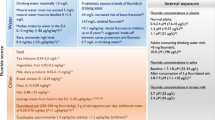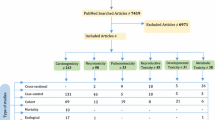Abstract
This study investigated the toxicity of rats exposed to lead acetate (AcPb) during the second phase of brain development (8–12 days postnatal) in hematological and cerebral parameters. Moreover, the preventive effect of zinc chloride (ZnCl2) and N-acetylcysteine (NAC) was investigated. Pups were injected subcutaneously with saline (0.9% NaCl solution), ZnCl2 (27 mg/kg/day), NAC (5 mg/kg/day) or ZnCl2 plus NAC for 5 days (3rd–7th postnatal days), and with saline (0.9% NaCl solution) or AcPb (7 mg/kg/day) in the five subsequent days (8th–12th postnatal days). Animals were sacrificed 21 days after the last AcPb exposure. Pups exposed to AcPb presented inhibition of blood porphobilinogen-synthase (PBG-synthase) activity without changes in hemoglobin content. ZnCl2 pre-exposure partially prevented PBG-synthase inhibition. Regarding neurotoxicity biomarkers, animals exposed to AcPb presented a decrease in cerebrum acetylcholinesterase (AChE) activity and an increase in Pb accumulation in blood and cerebrum. These changes were prevented by pre-treatment with ZnCl2, NAC, and ZnCl2 plus NAC. AcPb exposure caused no alteration in behavioral tasks. In short, results show that AcPb inhibited the activity of two important enzymatic biomarkers up to 21 days after the end of the exposure. Moreover, ZnCl2 and NAC prevented the alterations induced by AcPb.



Similar content being viewed by others
References
Berraha AA, Nehdi A, Hajjaji N, Gharbi N, El-Fazâa S (2007) Antioxidant enzymes activities and bilirubin level in adult rat treated with lead. C R Biol 330:581–588
Phyu MP, Tangpong J (2013) Protective effect of Thunbergia laurifolia (Linn.) on lead induced acetylcholinesterase dysfunction and cognitive impairment in mice. Biomed Res Int. doi:10.1155/2013/186098
Godwin HA (2001) The biological chemistry of lead. Curr Opin Chem Biol 5:223–227
Pande M, Flora SJS (2002) Lead induced oxidative damage and its response to combined administration of α-lipoic acid and succimers in rats. Toxicology 177:187–196
Li X, Zhang Z, Li P, Zhang Q, Zhang W, Ding X (2013) Determination for major chemical contaminants in tea (Camellia sinensis) matrices: a review. Food Res Int 53:649–658
Nagarajan S, Sivaji K, Krishnaswamy S, Pemiah B, Rajan KS, Krishnan UM, Sethuraman S (2014) Safety and toxicity issues associated with lead-based traditional herbo-metallic preparations. J Ethnopharmacol 151:1–11
Kasperczyk S, Dobrakowski M, Kasperczyk A, Romuk E, Rykaczewska-Czerwinska M, Pawlas N, Birkner E (2016) Effect of N-acetylcysteine administration on homocysteine level, oxidative damage to proteins, and levels of iron (Fe) and Fe-related proteins in lead-exposed workers. Toxicol Ind Health 32:1607–1618
Gurer H, Ercal N (2000) Can antioxidants be beneficial in the treatment of lead-poisoning? Free Radic Biol Med 29:927–945
Casado MF, Cecchini AL, Simão ANC, Oliveira RD, Cecchini R (2007) Free radical-mediated pre-hemolytic injury in human red blood cells subjected to lead acetate as evaluated by chemiluminescence. Food Chem Toxicol 45:945–952
Dewanjee S, Sahu R, Karmakar S, Gangopadhyay M (2013) Toxic effects of lead exposure in Wistar rats: involvement of oxidative stress and the beneficial role of edible jute (Corchoruso litorius) leaves. Food Chem Toxicol 55:78–91
Richetti SK, Rosemberg DB, Ventura-Lima J, Monserrat JM, Bogo MR, Bonan CD (2011) Acetylcholinesterase activity and antioxidant capacity of zebrafish brain is altered by heavy metal exposure. Neurotoxicology 32:116–122
Ademuyiwa O, Ugbaja RN, Rotimi SO, Abama E, Okediran BS, Dosumu OA, Onunkwor BO (2007) Erythrocyte acetylcholinesterase activity as a surrogate indicator of lead-induced neurotoxicity in occupational lead exposure in Abeokuta, Nigeria. Environ Toxicol Pharmacol 24:183–188
Cory-Slechta DA, Pokora MJ, Widzowski DV (1992) Postnatal lead exposure induces super sensitivity to the stimulus properties of a D2-D3 agonist. Brain Res 598:162–172
Wang Q, Zhao H, Chen J, Hao Q, Gu K, Zhu Y, Zhou Y, Ye L (2010) δ-Aminolevulinic acid dehydratase activity, urinary δ-aminolevulinic acid concentration and zinc protoporphyrin level among people with low level of lead exposure. Int J Hyg Environ Health 213:52–58
Patrick L (2006) Lead toxicity, a review of the literature. Part 1: exposure, evalution and treatment. Altern Med Rev 11:2–22
Rocha JBT, Pereira ME, Emanuelli T, Christofari RS, Souza DO (1995) Effect of treatment with mercury chloride and lead acetate during the second stage of rapid postnatal brain growth on δ-aminolevulinic acid dehydratase (ALA-D) activity in brain, liver, kidney and blood of suckling rats. Toxicology 100:27–37
Peixoto NC, Roza T, Pereira ME (2004) Sensitivity of δ-ALA-D (E.C. 4.2.1.24) of rats to metals in vitro depends on the stage of postnatal growth and tissue. Toxicol in Vitro 18:805–809
Perottoni J, Meotti FC, Folmer V, Pivetta L, Nogueira CW, Zeni G, Rocha JBT (2005) Ebselen and diphenyl diselenide do not change the inhibitory effect of lead acetate on delta-aminolevulinate dehydratase. Environ Toxicol Pharmacol 19:239–248
Scheuhammer AM (1987) Erythrocyte d-aminolevulinic acid dehydratase in birds. I. The effects of lead and other metals in vitro. Toxicology 45:155–163
Shemin D (1976) 5-Aminolaevulinic acid dehydratase: structure, function, and mechanism. Phil Trans R Soc Lond B 273:109–115
Klaassen CD (1996) Heavy metals and heavy-metals antagonists. In: Hardman JG, Giman AG, Limbird LE (eds) Goodman & Gilman’s the pharmacological basis of therapeutics, 9th edn. McGraw-Hill, New York, pp 1649–1671
Goyer RA (1996) Toxic effects of metals. In: Klaassen CD (ed) Casarett & Doull’s toxicology: the basic science of poisons, 5th edn. McGraw-Hill, New York, pp 691–736
Blokland A (1995) Acetylcholine: a neurotransmitter for learning and memory? Brain Res Rev 21:285–300
Alfano DP, Petit TL, Leboutillier JC (1983) Development and plasticity of the hippocampal-cholinergic system in normal and early lead exposed rats. Brain Res 312:117–124
Liu C, Zheng G, Ming Q, Sun J, Cheng C (2013) Protective effect of puerarin on lead-induced mouse cognitive impairment via altering activities of acetylcholinesterase, monoamine oxidase and nitric oxide synthase. Environ Toxicol Pharmacol 35:502–510
Reddy GR, Devi BC, Chetty CS (2007) Developmental lead neurotoxicity: alterations in brain cholinergic system. Neurotoxicology 28:402–407
Franciscato C, Goulart FR, Lovatto NM, Duarte FA, Flores EMM, Dressler VL, Peixoto NC, Pereira ME (2009) ZnCl2 exposure protects against behavioral and acetylcholinesterase changes induced by HgCl2. Int J Dev Neurosci 27:459–468
Gottlieb A, Keydar I, Epstein HT (1977) Rodent brain growth stages: an analytical review. Biol Neonate 32:166–176
Winick M, Noble A (1965) Quantitative changes in DNA, RNA, and protein during prenatal and postnatal growth in the rat. Dev Biol 12:451–466
Domingo JL (1998) Developmental toxicity of metal chelating agents. Reprod Toxicol 12:499–510
Cantilena LR Jr, Klaassen CD (1982) The effect of chelating agents on the excretion of endogenous metals. Toxicol Appl Pharmacol 63:344–350
Aruoma OI, Halliwell B, Hoey BM, Butler J (1989) The antioxidant action of N-acetylcysteine: its reaction with hydrogen peroxide, hydroxyl radical, superoxide, and hypochlorous acid. Free Radic Biol Med 6:593–597
Oliveira VA, Oliveira CS, Ineu RP, Moraes-Silva L, Siqueira LF, Pereira ME (2014) Lactating and non-lactating rats differ in sensitivity to HgCl2: protective effect of ZnCl2. J Trace Elem Med Biol 28:240–246
Roney N, Colman J (2004) Interaction profile for lead, manganese, zinc, and copper. Environ Toxicol Pharmacol 18:231–234
Chen W, Ercal N, Huynh T, Volkov A, Chusuei CC (2012) Characterizing N-acetylcysteine (NAC) and N-acetylcysteine amide (NACA) binding for lead poisoning treatment. J Colloid Interface Sci 371:144–149
Lange A, Ausseil O, Segner H (2002) Alterations of tissue glutathione levels and metallothionein mRNA in rainbow trout during single and combined exposure to cadmium and zinc. Comp Biochem Physiol C Toxicol Pharmacol 131:231–243
Eaton DL, Stacey NH, Wong KL, Klaassen CD (1980) Dose-response effects of various metal ions on rat liver metallothionein, glutathione, heme oxygenase, and cytochrome P-450. Toxicol Appl Pharmacol 55:393–402
Peixoto NC, Serafim MA, Flores EMM, Bebiano MJ, Pereira ME (2007) Metallothionein, zinc and mercury levels in tissues of young rats exposed to zinc and subsequently to mercury. Life Sci 81:1264–1271
Peixoto NC, Roza T, Flores EM, Pereira ME (2003) Effects of zinc and cadmium on HgCl2-δ-ALA-D inhibition and Hg levels in tissues of suckling rats. Toxicol Lett 146:17–25
Franciscato C, Moraes-Silva L, Duarte FA, Oliveira CS, Ineu RP, Flores EM, Dressler VL, Peixoto NC, Pereira ME (2011) Delayed biochemical changes induced by mercury intoxication are prevented by zinc pre-exposure. Ecotoxicol Environ Saf 74:480–486
Ercal N, Treeratphan P, Lutz P, Hammond TC, Matthews RH (1996) N-acetylcysteine protects chinese hamster ovary (CHO) cells from lead-induced oxidative stress. Toxicology 108:57–64
Sisombath NS, Jalilehvand F (2015) Similarities between N-acetylcysteine and glutathione in binding to lead(II) ions. Chem Res Toxicol 28:2313–2324
Cardiano P, Foti C, Giuffre O (2016) On the interaction of N-acetylcysteine with Pb2+, Zn2+, Cd2+ and Hg2+. J Mol Liq 223:360–367
Da-Silva VA, Malheiros LR, Bueno FMR (1990) Effects of toluene exposure during gestation on neurobehavioral development of rats and hamster. Braz J Med Biol Res 23:533–537
Peixoto NC, Roza T, Morsch VM, Pereira ME (2007) Behavioral alterations induced by HgCl2 depend on the postnatal period of exposure. Int J Dev Neurosci 25:39–46
Smart JL, Dobbing J (1971) Vulnerability of developing brain. II. Effects of early nutritional deprivation on reflex ontogeny and developmental of behavior in the rat. Brain Res 28:85–95
Sassa S (1982) Delta-aminolevulinic acid dehydratase assay. Enzyme 28:133–145
Ellman GL, Courtney KD, Andress JRV, Featherstone RM (1961) A new and rapid colorimetric determination of acetylcholinesterase activity. Biochem Pharmacol 7:88–95
Pereira ME, Adams AIH, Silva NS (2004) 2,5-Hexanedione inhibits rat brain acetylcholinesterase activity in vitro. Toxicol Lett 146:269–274
Bradford MM (1976) A rapid and sensitive method for quantitation of microgram quantities of protein utilizing the principle of protein-dye binding. Anal Biochem 72:248–254
Ineu RP, Oliveira CS, Oliveira VA, Moraes-Silva L, Luz SCA, Pereira ME (2013) Antioxidant effect of zinc chloride against ethanol-induced gastrointestinal lesions in rats. Food Chem Toxicol 58:522–529
Rooney JP (2007) The role of thiols, dithiols, nutritional factors and interacting ligands in the toxicology of mercury. Toxicology 234:145–156
Goering PL (1993) Lead–protein interactions as a basis for lead toxicity. Neurotoxicology 14:45–60
Nakagawa K, Asami M, Kuriyama K (1980) Inhibition of release of lysosomal enzymes in young rat brain by lead acetate. Toxicol Appl Pharmacol 56:86–92
Rendón-Ramírez A, Cerbón-Solórzano J, Maldonado-Veja M, Quintanar-Escorza MA, Calderón-Salinas JV (2007) Vitamin-E reduces the oxidative damage on δ-aminolevulinic dehydratase induced by lead intoxication in rat erythrocytes. Toxicol in Vitro 21:1121–1126
Petrucci RA, Leonardi A, Battistuzzi G (1982) The genetic polymorphism of delta-ALAD in Italy. Hum Genet 60:289–290
Basha MR, Wei W, Brydie M, Razmiafshari M, Zawia NH (2003) Lead-induced developmental perturbations in hippocampal Sp1 DNA-binding are prevented by zinc supplementation: in vivo evidence for Pb and Zn competition. Int J Dev Neurosc 21:1–12
Abdel Moneim AE (2012) Flax seed oil as a neuroprotective agent on lead acetate-induced monoamineric alterations and neurotoxicity in rats. Biol Trace Elem Res 148:363–370
Reddy GR, Basha MDR, Devi CB, Suresh A, Baker JL, Shafeek A, Heinz J, Chetty CS (2003) Lead induced effects on acetylcholinesterase activity in cerebellum and hippocampus of developing rat. Int J Dev Neurosc 21:347–352
Ramabadran K, Bansinath M, Turndorf H, Puig MM (1989) The hyperalgesic effect of naloxone is attenuated in streptozotocin-diabetic mice. Psychopharmacology 97:169–174
ASTDR (Agency for Toxic Substances and Disease Registry) (2007) Toxicological profile for lead. U.S. Department Of Health And Human Services, Atlanta
Peraza MA, Ayalo-Fierro F, Barber DS, Casarez E, Rael LT (1998) Effects of micronutrients on metal toxicity. Environ Health Perspect 106:203–216
Fowler BA (1998) Roles of lead-binding proteins in mediating lead bioavailability. Environ Health Perspect 106:1585–1587
Nehru B, Kanwar SS (2007) Modulation by N-acetylcysteine of lead-induced alterations in rat brain: reduced glutathione levels and morphology. Toxicol Mech Method 17:289–293
Acknowledgements
The authors would like to thank the Conselho Nacional de Desenvolvimento Científico e Tecnológico (CNPq 311082/2014-9) and Coordenação de Aperfeiçoamento de Pessoal de Nível Superior (CAPES).
Author information
Authors and Affiliations
Corresponding author
Ethics declarations
The animals were used according to the guidelines of the Committee on Care and Use of Experimental Animal Resources, Federal University of Santa Maria, Brazil (Process number-5320270415).
Conflict of Interest
The authors declare that they have no conflict of interest.
Rights and permissions
About this article
Cite this article
Pedroso, T.F., Oliveira, C.S., Fonseca, M.M. et al. Effects of Zinc and N-Acetylcysteine in Damage Caused by Lead Exposure in Young Rats. Biol Trace Elem Res 180, 275–284 (2017). https://doi.org/10.1007/s12011-017-1009-z
Received:
Accepted:
Published:
Issue Date:
DOI: https://doi.org/10.1007/s12011-017-1009-z




